


Chess News


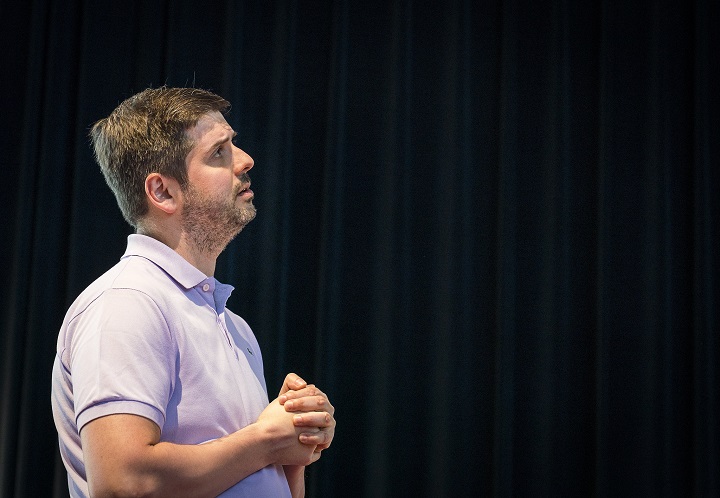
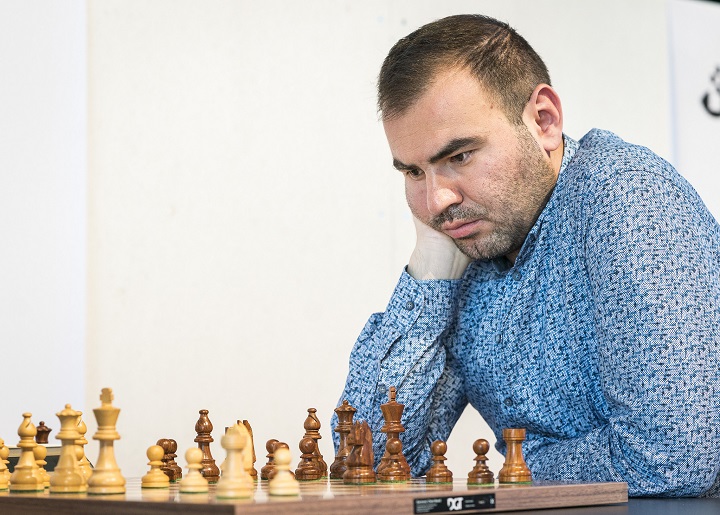
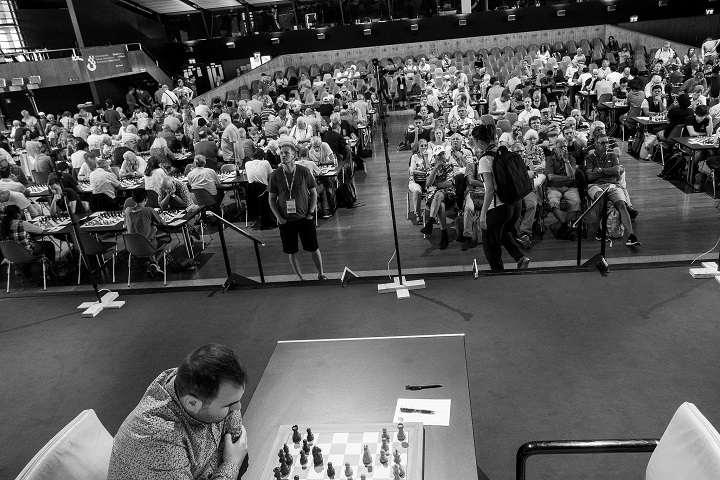
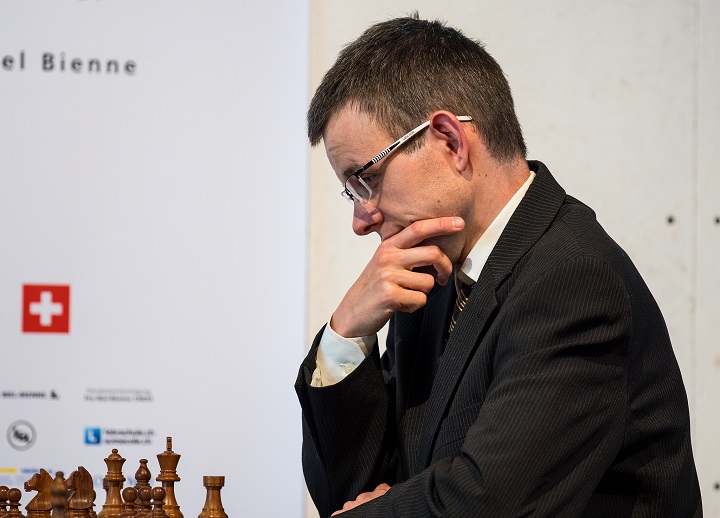

The fifth round of the Accentus Biel GM tournament was played on Thursday. In the second half of the event, the players will face each other once again with colours reversed. In the first half of the competition, Carlsen and Mamedyarov have shown their strength, Svidler and Navara are still in contention, and it is not impossible for Vachier-Lagrave to make a comeback.
In his game against Nico Georgiadis, Vachier-Lagrave played the Mikenas variation of the English opening. By choosing 9.Be2, he followed the plan that gave Daniil Dubov a win over Hikaru Nakamura at the Tal Memorial. In this line, White usually sacrifices a pawn — unlike Nakamura, however, the Swiss GM did not take his opponent's offer. Vachier-Lagrave obtained an edge in development and eventually won a pawn himself. In the endgame, White slowly enlarged his advantage.
Black captured the c5-pawn with the rook, only to realize that after 36.Rd8+ he was going to lose his rook (36...Kg7 37.Ne6+). Naturally, Georgiadis resigned, and Vachier-Lagrave obtained his first victory of the tournament.
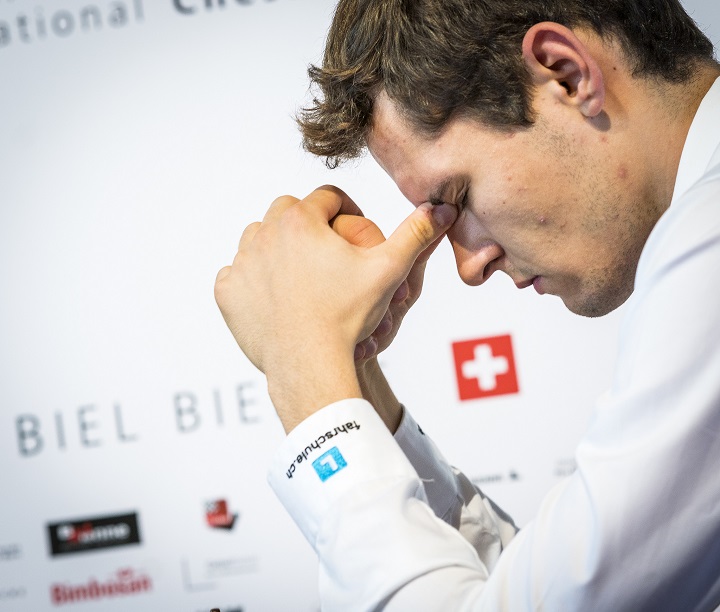
Nico Georgiadis is facing a tough challenge in home soil | Photo: Lennart Ootes / Biel International Chess Festival
Danny King provided in-depth analysis of the only decisive game of the day:
The other two games featured battles where both sides maintained the balance with very controlled play. None of the four participants could provoke a big enough mistake from their rivals, so the draws were fair and natural outcomes in both cases.
Peter Svidler and David Navara also went into an English opening, but chose the Four Knights variation with 4.e3. This line has been played a lot recently amongst the elite. Svidler and Navara followed theory until move 18 and reached a balanced endgame with symmetrical pawn structures. The only nominal advantage for Svidler was the fact that he had the pair of bishops.
The Czech player provoked the exchange of all the kingside pawns timely, killed all of White's intentions prophylactically and signed a draw after 40 moves. In the first half of the tournament, both Svidler and Navara defeated Georgiadis, but David lost against Carlsen, while Peter drew the rest of his games.

Peter Svidler and David Navara getting in the zone before their game | Photo: Simon Bohnenblust / Biel International Chess Festival
In the most expected game of the round, Magnus Carlsen had the white pieces against Shakhriyar Mamedyarov. The World Champion played a Spanish with 5.d3 and the game took the typical nature of a "Modern Variation" of the Italian, something we see very often nowadays.
Carlsen obtained some play on the queenside and reached and endgame with a passed pawn on the c-file. Black had an extra central pawn in return, but Magnus knew that he had some chances with his outside passer. Loyal to his fighting spirit, the Norwegian tried to squeeze something out of this small edge.
Nonetheless, Mamedyarov defended accurately and did not falter in the queen's endgame. The draw was agreed on move 67.
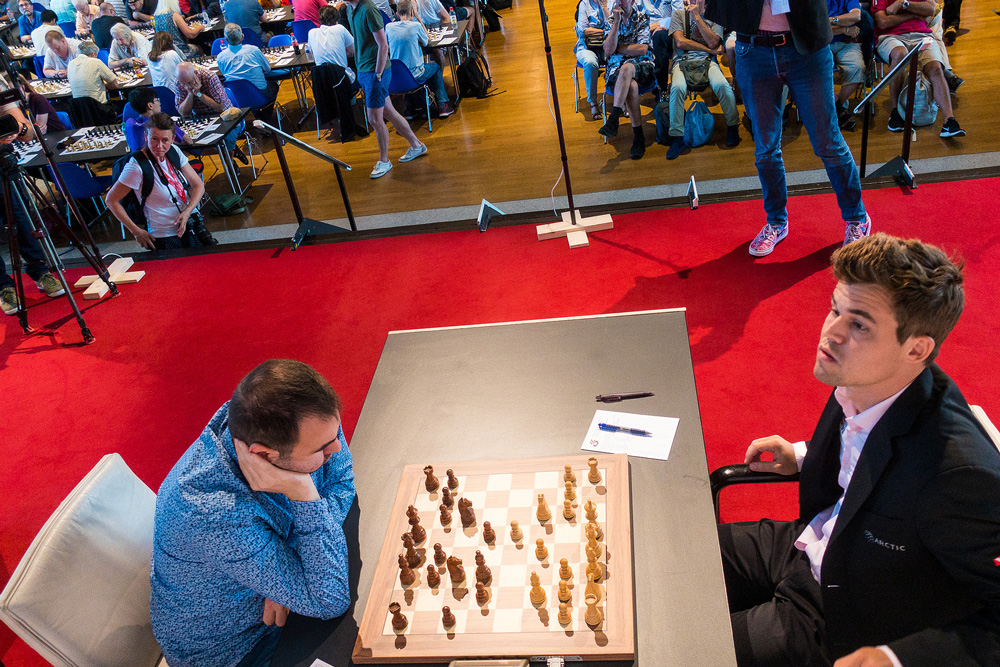
Two 2800s in Biel | Photo: Simon Bohnenblust / Biel International Chess Festival
Translation from German and additional reporting: Antonio Pereira